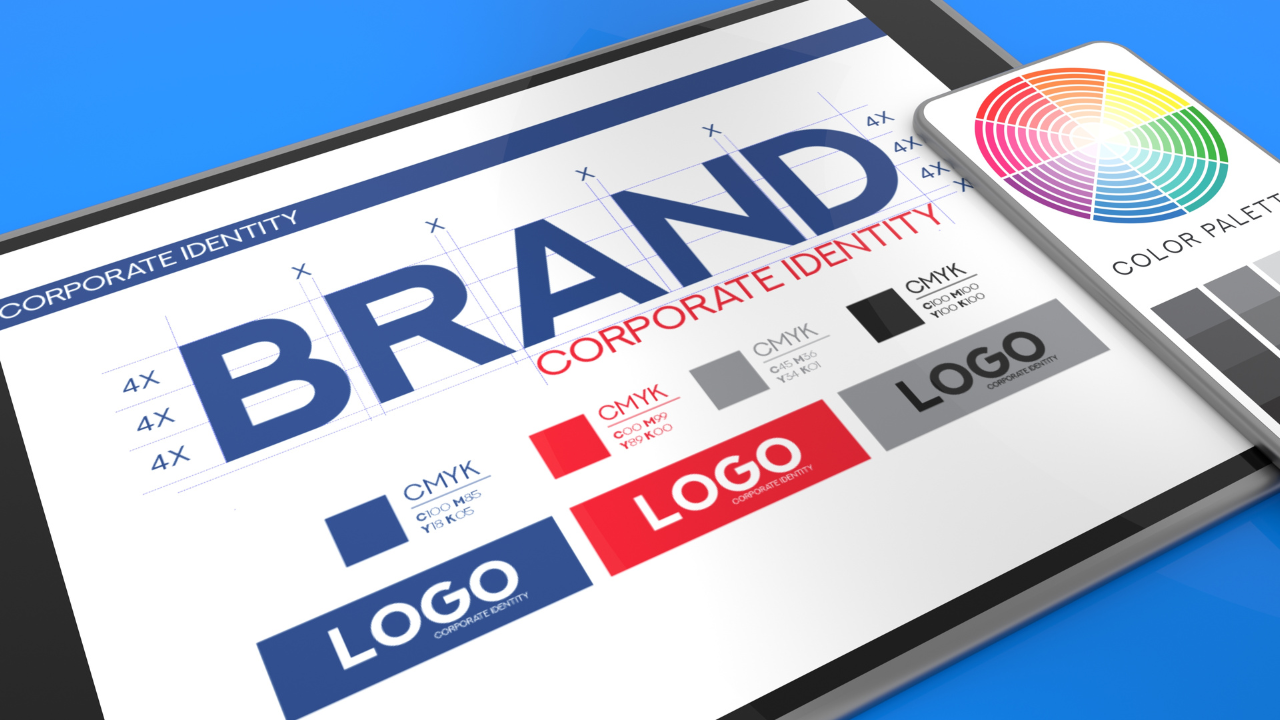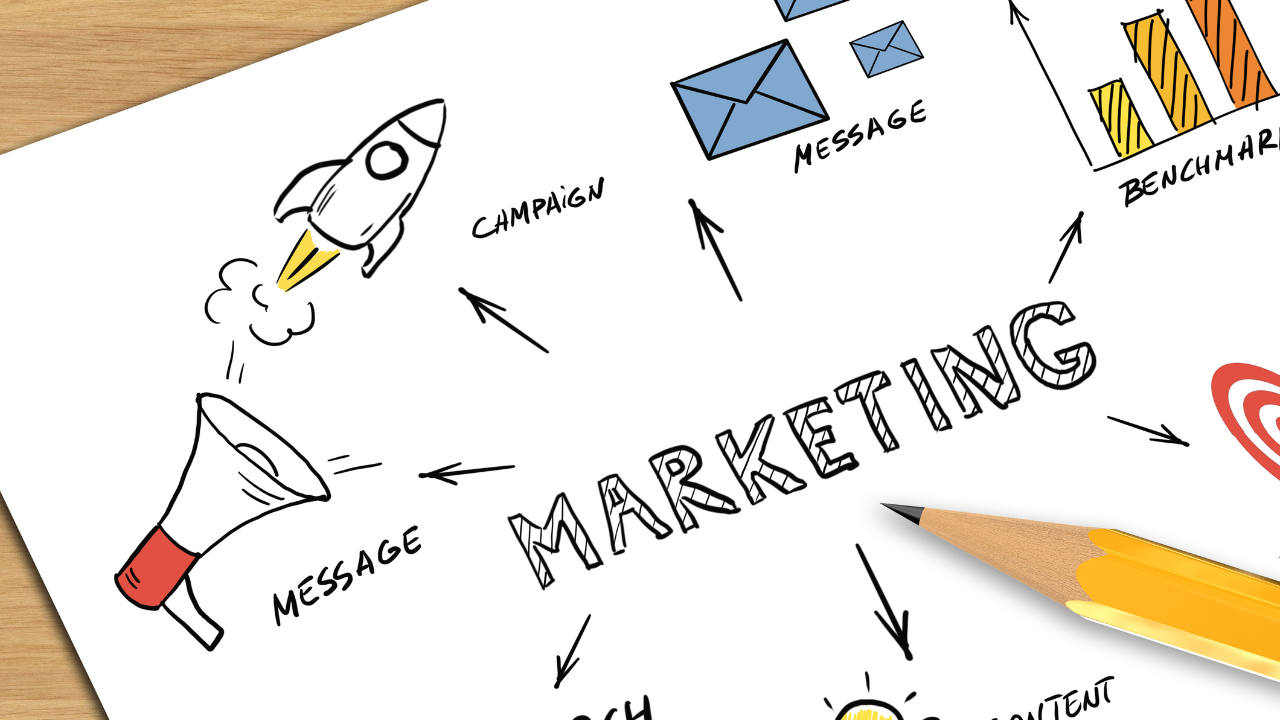In search for company website design?
In today’s digitally driven landscape, your company website design isn’t just a box to tick. It’s your virtual headquarters, your brand ambassador, and often your first impression. Whether you’re a small business owner or a corporate leader, this guide will walk you through the entire process of crafting a stunning website that not only looks amazing but drives tangible results.
Why Website Design Matters for Every Business
An effective website is more than pixels and code. It is the cornerstone of your online brand identity. Your web design must reflect your values, attract your customers, and support your business goals. It’s the hub where all your digital marketing efforts converge.
Studies show that it takes less than 0.05 seconds for users to form an opinion about your site. That means you have one shot to make it count. A poor impression could lose a client, while a strong one could start a loyal relationship.
But the impact goes beyond first impressions. A professional company website design builds authority in your niche, signals professionalism, and showcases what sets your clients’ brands apart. In a crowded marketplace, a compelling and consistent website design helps you stand out.
Moreover, a good website aligns with user expectations. When visitors arrive at your site, they should instantly understand who you are, what you offer, and how to take the next step—whether that’s browsing your services, reading case studies, or filling out a contact form. A poor user experience, on the other hand, creates friction and drives potential leads elsewhere.
Your website is also your most powerful conversion tool. With carefully placed CTAs, high-performing landing pages, and content that resonates with your audience’s needs, your website works 24/7 to turn casual visitors into paying customers. It’s your silent salesperson, doing the heavy lifting while you focus on running your business.
Finally, consider the data-driven advantages. A strategically designed website allows you to track engagement, analyse user behaviour, and tweak your messaging or page layouts based on performance. This iterative improvement is key to long-term success in the digital space.
Understanding the Difference: Web Designers vs Web Developers
While web designers focus on the creative design and layout of your web page, web developers build the web applications and infrastructure behind the scenes. Great website design requires the collaboration of both to ensure your website not only looks good but functions smoothly across all screen sizes.
- Web designers handle layout, typography, colour theory, graphic design, and crafting a cohesive visual brand identity. Their job is to make your site visually appealing, easy to use, and on-brand.
- Web developers bring that design to life using code. They ensure your site is interactive, responsive, and optimised for performance. Their work covers front-end logic and back-end systems that power web applications, forms, security, and databases.
Think of it this way: if your website were a house, the designer would be the architect and interior stylist, while the developer would be the engineer and builder.
Without one or the other, you risk ending up with either a gorgeous but non-functional site, or a robust but visually underwhelming one.
Collaboration between these two roles ensures your company website design is not only functional and user-friendly but also conveys your brand‘s message clearly and beautifully. When these teams work seamlessly, the outcome is a beautiful website that delivers real value, elevates your digital presence, and supports your overall business goals.
When to Hire a Web Developer
If you’re looking to build complex functionalities like booking systems, member dashboards, or real-time calculators, a web developer is your best friend.
When to Hire a Web Designer
If your focus is more on aesthetics, storytelling, and aligning visuals with your brand, a designer is essential. Ideally, hire both—or a development company that includes both skill sets.
Set Clear Website Goals from the Start
very company needs a clear purpose behind its website. Whether you’re building a site from scratch or doing a redesign, it’s essential to define what success looks like.
Start by asking yourself:
- Do you want to attract new clients and grow your audience?
- Are you looking to launch or expand online stores?
- Will your website serve primarily as an educational hub or resource centre?
- Is your goal to improve your seo and increase visibility in search engines?
- Are you hoping to integrate a content management system for team-wide collaboration?
- Will you be using the site to support advertising campaigns or collect leads?
By narrowing down your website goals, you help your web designers and web developers prioritise the features and functionalities that matter most. For example, a site focused on lead generation might require built-in CRM integration and strong CTAs, while an ecommerce site will benefit from advanced product filtering, secure checkout, and cart recovery features.
Having clear objectives also allows for more effective performance tracking. If you know what you’re aiming to achieve—whether it’s higher conversion rates, more contact form submissions, or increased dwell time—you can use those KPIs to evaluate and improve your design.
Additionally, your goals should align with your broader business goals and digital marketing strategies. A disjointed or unclear vision results in wasted time, bloated budgets, and underperforming designs. Instead, treat your company website design like a project with measurable outcomes and a user-first approach.
Need help defining those goals? Our team at Piri Piri can guide you through the discovery phase to clarify your needs and build a roadmap that ensures your website becomes a key driver of your success.
What Makes a Good Company Website Design?
A good company website isn’t just functional—it’s memorable. It seamlessly blends strategy, aesthetics, and performance to deliver an engaging experience that aligns with your brand and converts visitors into loyal customers. So, what exactly makes a website stand out in today’s competitive online landscape? It comes down to these foundational elements, which work together to form a cohesive and effective online presence.
1. Responsive Web Design
Your website must adapt to mobile devices, tablets, and desktop displays. A responsive design ensures that your site looks and functions well across all screen sizes, improving user experience and boosting your search rankings.
Responsiveness isn’t just a design preference—it’s a ranking signal used by Google. When your website performs flawlessly across all platforms, from smartphones to widescreens, users stay longer, bounce less, and are more likely to convert. It also makes content sharing easier, especially on mobile-first platforms like social media and email campaigns. No matter how beautiful your design is, if it’s not responsive, it’s not complete.
2. Easy Navigation
Intuitive menus guide users to the content they need quickly. Think of your website as a digital map – if it’s hard to follow, users will abandon it.
Simple, clean navigation helps visitors move through your site without confusion. Consider incorporating breadcrumb trails, sticky menus, or mega menus for content-rich websites to improve navigation and provide fresh ideas . Consistent placement of menu items, logical groupings, and clear labels reduce friction and increase time on site—an important metric for both conversions and SEO.
3. Strong Brand Identity
From colours to fonts and logos, your web design should reflect your brand. A brand refresh may be needed if your visual identity is outdated, often requiring the expertise of graphic designers . Good design reinforces recognition and trust.
Your website is often the first branded interaction a potential customer will have. Consistent visual branding helps establish trust and credibility. This includes maintaining uniform design elements across all pages, aligning the tone of your copy with your brand voice, and incorporating imagery that tells your brand’s story. It’s not just what your site says—it’s how it says it.
4. Fast Load Times
Speed is crucial. Optimising images, using clean code, and leveraging caching improves load speed and keeps visitors engaged. Faster websites lead to lower bounce rates and higher conversions.
Research shows that even a one-second delay in page load time can decrease conversions by up to 7%. Tools like Google PageSpeed Insights or GTmetrix can help you identify bottlenecks. A high-performing website should feel frictionless, especially for users accessing it on slow mobile networks or older devices.
5. Visual Hierarchy and CTAs
Highlight important content with smart creative design. Use calls to action like “Contact us” or “Explore our services” to guide users. Strategically place CTAs in areas where users tend to scroll and pause.
Visual hierarchy is the art of leading the viewer’s eye through your page in order of importance. This includes the strategic use of contrast, spacing, size, and alignment. Combine it with strong, action-oriented CTAs to encourage interaction, whether that’s downloading a resource, booking a call, or making a purchase based on user behavior . Don’t overwhelm users with too many options—clarity converts.
6. Scalability
Plan for future growth. Your new website should scale with your business—whether that means adding more pages, updating your ecommerce catalog, or integrating a chatbot.
Scalability is vital for future-proofing your site. Choose platforms and technologies that allow for modular growth. Whether you’re launching new services, expanding to new markets, or integrating third-party tools like CRMs or booking systems, your infrastructure should support it without needing a full rebuild. This ensures long-term ROI and a smooth growth trajectory.
Build for Mobile-First, Not Just Mobile-Friendly
In Australia, over 63% of web traffic comes from mobile users. If your web design doesn’t prioritise mobile devices, you risk losing traffic, conversions, and sales. Simply being “mobile-friendly” isn’t enough anymore—what’s needed is a mobile-first design strategy.
A mobile-first approach ensures:
- Touch-friendly navigation that responds easily to finger taps
- Readable fonts that scale appropriately without pinch-zooming
- Minimal scrolling with clean hierarchy and collapsible content blocks
- Fast performance optimised for 4G and 5G networks
- Content prioritisation that focuses on what users need most on-the-go
Why mobile-first? Because your audience is likely browsing your site while commuting, multitasking, or in between meetings. This means their attention span is shorter, their internet connection may vary, and their device screen is smaller. Prioritising responsive web design from a mobile-first standpoint forces you to eliminate fluff and deliver only the most essential elements upfront.
It also future-proofs your website for wearables, foldables, and evolving device ecosystems. And here’s the kicker—once you design for mobile first, translating that to larger screen sizes becomes significantly easier. You’re not retrofitting a bloated layout to fit; you’re scaling an already efficient structure.
Plus, Google uses mobile-first indexing to determine search rankings, so if your site doesn’t perform well on mobile, it can directly impact your SEO. In other words, mobile-first design isn’t just user-centric—it’s business-critical.
At Piri Piri Marketing Hub, we lead with mobile-first strategies to ensure your website delivers speed, elegance, and real results—no matter where your users are.
Content That Converts
Your website content should answer your users’ questions, solve their pain points, and drive them to take action.
Use:
- SEO-friendly headers
- Concise copy
- High-quality images
- Embedded videos and case studies
- Personalised language that resonates with your audience
Don’t forget about tone—it should reflect your brand, whether that’s professional, cheeky, or conversational.
Choose the Right Web Applications: CMS and More
Your content management system (CMS) gives you full control to update, edit, and manage your website content. It also affects how efficiently your team can publish updates, launch new campaigns, and expand your online presence.
Choosing the right CMS is about more than just convenience—it’s about aligning with your technical skill set, scalability needs, and long-term business goals, making a dedicated choice essential .
Popular CMS Options and What They’re Best For
- WordPress: Highly customisable, user-friendly, and supported by a massive community of web developers. It’s perfect for blogs, service-based businesses, and organisations that want flexibility with plugins and integrations.
- Shopify: The go-to platform for ecommerce. It’s easy to set up and manage, offering robust inventory tools, built-in analytics, and an ecosystem of apps for marketing and logistics.
- Webflow: Ideal for those who want design control without relying on a developer for every tweak. Webflow bridges the gap between visual design and powerful development, offering a slick interface for designers and marketers.
- Drupal or Joomla: Great for large enterprises with in-house technical teams that need structured data and high security.
Key Considerations When Choosing a CMS
- Ease of use: Can your team update content without coding?
- Customisation: How much design freedom do you need?
- Scalability: Will the CMS support your growth and evolving needs?
- Security: Does it offer built-in protections or require third-party solutions?
- SEO friendliness: Can you easily manage metadata, URLs, and site performance?
- Third-party integrations: Will it work with your CRM, payment gateways, or marketing tools?
Why the Right CMS Matters
The CMS you choose plays a major role in your daily operations. A good CMS will make content creation and editing frictionless, encourage team collaboration, and improve the speed at which you can respond to market changes. On the flip side, the wrong CMS can lead to bottlenecks, increased costs, and missed opportunities.
At Piri Piri Marketing Hub, we take time to understand your workflow, your technical proficiency, and your plans for scale. Whether you’re launching a blog, setting up a product catalogue, or managing multilingual content, we’ll help you choose and implement the platform that sets you up for success.
And remember, selecting a CMS is just the beginning—we’ll also guide you on best practices to get the most out of it. From plugin recommendations to performance optimisation, we’ve got your back.
Templates vs Custom Design: What’s Right for You?
Templates are pre-built and fast, but can limit branding.
Custom website design:
- Reflects unique brand identity
- Meets specific functional needs
- Improves SEO with optimised code
At Piri Piri, we balance budget, time, and marketing goals to recommend the best route.
If you’re aiming for a standout presence, custom design is your best bet.
SEO and Website Design: A Match Made in Google Heaven
Great web design and effective seo are inseparable in today’s digital landscape. While design captures attention and facilitates usability, SEO ensures your content gets found by the right people at the right time. When harmonised, they elevate your website to top-performing status.
Here’s how smart design supports strong seo:
- Reducing bounce rates: A clean, intuitive interface keeps users engaged and exploring your site, signalling to Google that your content is valuable.
- Improving user engagement: Interactive elements, fast-loading pages, and visually appealing layouts encourage users to stay longer and interact more.
- Organising content for indexing: Proper heading structures (H1–H5), internal linking, and semantic HTML make it easier for search engines to crawl and understand your site.
- Speeding up load times: Page speed is a direct Google ranking factor. Optimised images, compressed files, and caching reduce friction and keep users happy.
- Mobile responsiveness: Since Google now uses mobile-first indexing, a responsive design is essential to rank well on all devices.
But there’s more. Optimised web design also:
- Enhances metadata visibility through integrated CMS tools
- Enables structured data implementation (like schema.org) to improve rich snippets
- Facilitates high-performing landing pages that support ad campaigns
- Encourages users to share your site via social media integrations and shareable content formats
A beautiful website with poor SEO is like a billboard in the desert—nobody sees it. Likewise, a site that ranks well but looks dated or feels clunky will drive people away.
That’s why at Piri Piri Marketing Hub, we approach company website design with an SEO-first mindset. From designing fast, clean layouts to ensuring every web page is tagged and structured for visibility, we optimise every pixel for performance, highlighting the services we provid .
So whether you’re aiming to increase organic traffic, climb the search rankings, or simply make sure your site performs as well behind the scenes as it looks up front—we’ve got you covered.
E-commerce and Online Stores That Convert
Selling online? Your online stores need more than just a cart and checkout.
Key features:
- Clear product categories
- Secure payment systems
- Reviews and ratings
- Searchable filters
- Optimised product pages
- Inventory and order tracking
- Responsive design for mobile shopping
We create stunning websites that convert browsers into buyers.
Web Design That Adapts to User Behaviour
Understanding user behaviour helps refine layout, CTAs, and content flow.
Use tools like:
- Google Analytics
- Hotjar
- A/B testing platforms
This ensures your new website evolves with your customers and improves over time based on real-world data.
Why Work With a Professional Web Design & Web Development Company?
DIY builders are okay for hobbyists. But real results come from working with a dedicated development company like Piri Piri Marketing Hub.
We offer:
- A deep understanding of design and development
- Custom web applications
- Professional graphic designers and copywriters
- Integrated digital marketing strategies
Working with professionals means fewer headaches, faster turnaround, and better alignment with your long-term business goals.
The Piri Piri Process: From Ideas to Live Website
- Discovery & Strategy: Define business goals, audience, and scope
- Wireframing: Blueprint your web page structure
- Creative Design: Build layouts, visuals, and brand assets
- Development: Code, test, and optimise for all screen sizes
- Launch: Go live and connect with your market
- Post-Launch: Monitor, improve, and provide feedback
This process is collaborative. We work closely with our clients to ensure we build not just a site, but a solution.
Key Services We Offer
- Website design and web development
- Branding and brand refresh
- UX/UI and responsive web design
- SEO and analytics
- Copywriting and content strategy
- Hosting and maintenance
- Ecommerce setup
- Custom web applications
- Visual storytelling through images and motion graphics
What Sets Piri Piri Marketing Hub Apart?
- Local expertise with national reach
- Real-world case studies and results
- A holistic focus on your business and marketing goals
- Affordable pricing with no tech jargon company website design
- A talented team of designers, strategists, and developers
- Passionate problem-solvers with a love for design
We don’t just build websites. We create digital experiences that connect you with your audience.
Explore More Work and Get Inspired
Want to see what we’ve done? Explore our latest projects and more work that showcases how we help brands grow.
Check out our:
- Portfolio
- Client testimonials
- Industry-specific designs
You’ll get fresh ideas, see creative problem-solving in action, and understand why our clients stick with us.
Ready to Build a Beautiful Website That Works?

Whether you need a new website, a brand refresh, or a full web development strategy, we’re here to help you connect with your audience . At Piri Piri Marketing Hub, we combine design, function, and marketing savvy to deliver real results.
Let’s build something amazing together.
Contact Us today to get started with your company website design journey.


















